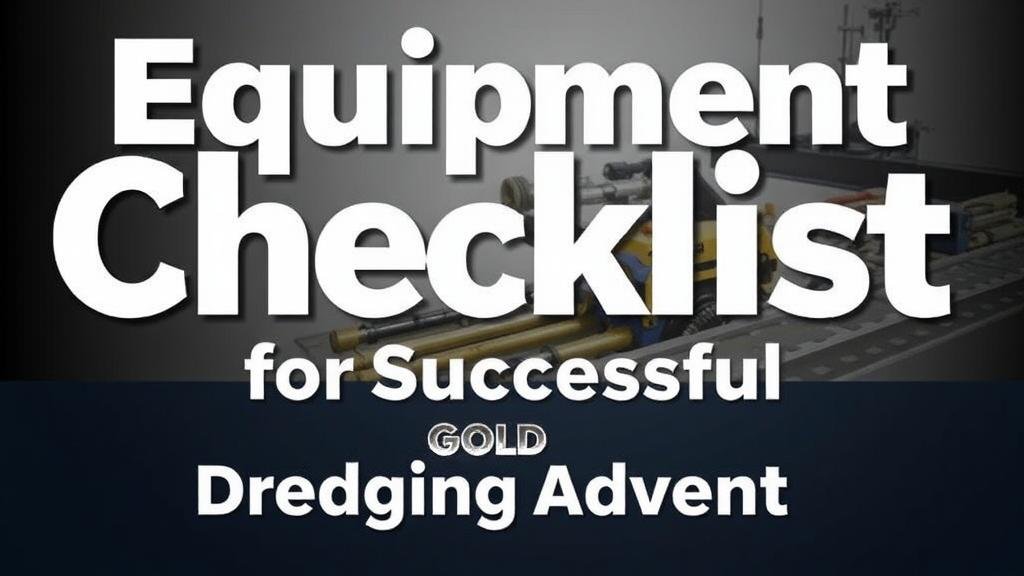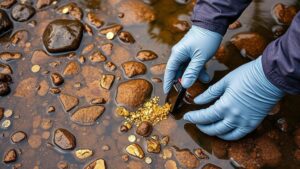Equipment Checklist for Successful Gold Dredging Adventures
Equipment Checklist for Successful Gold Dredging Adventures
Gold dredging is a popular and potentially lucrative outdoor activity that involves extracting gold from bodies of water using specialized equipment. Proper preparation and the right gear are essential for success. This article provides a comprehensive checklist of equipment required for a successful gold dredging adventure, along with examples and practical applications in the field.
Understanding Gold Dredging
Gold dredging involves the use of a dredge to suction up material from the riverbed, which is then processed to separate gold from other minerals. Dredging can be done in various environments, including rivers, lakes, and ocean beds. The main types of dredges include suction dredges and mechanical dredges, each suited for different conditions and gold detection methods.
Essential Equipment for Gold Dredging
The following is a detailed checklist of essential equipment that every gold dredging enthusiast should consider:
- The Dredge: This is the primary tool for gold dredging. Suction dredges are the most common because they allow for effective material extraction without disturbing the surrounding area. When selecting a dredge, consider factors such as size, power, and materials used.
- Gold Pan: A gold pan is crucial for processing the dredged material and separating the gold from sediment. Panning is a traditional method used to verify the quality of the material being dredged.
- Classifiers: Use classifiers to sort material by size before processing. This step increases efficiency and maximizes gold recovery.
- Wetsuits: Depending on the water temperature, a wetsuit can provide crucial insulation during extended periods in cold water.
- Safety Gear: Always wear appropriate safety gear such as gloves, goggles, and life jackets to ensure personal safety while operating equipment.
Support Gear
Also to the primary equipment, several supportive tools and supplies enhance the dredging experience:
- Air Compressor: An air compressor supplies air to divers operating underwater, allowing them to dredge safely at greater depths.
- Fuel Supplies: Always carry enough fuel for your dredge and other equipment, considering both operational needs and unexpected delays.
- Tools for Maintenance: Keep a toolkit ready including wrenches, screwdrivers, and other necessary items for any equipment repairs that may arise during the adventure.
Site Selection and Environmental Considerations
Selecting the right site is crucial for successful dredging. Look for areas known for gold deposits, such as river bends, behind boulders, or near old mining sites. Environmental regulations concerning gold dredging vary significantly between regions, so it is vital to check local guidelines to ensure compliance and sustainability.
Real-World Application: A Case Study on Dredging Techniques
Consider the case of a group of dredgers who operated in Alaskas rivers, where gold deposits are plentiful. They opted for a two-inch suction dredge for its portability and efficiency. By combining their dredging with gold panning and using classifiers to separate materials, they reported recovery rates of around 1.5 ounces of gold per day. Their approach highlights the importance of using the correct equipment and techniques to achieve successful outcomes.
Final Thoughts and Actionable Takeaways
Successful gold dredging requires careful planning, the right equipment, and a keen understanding of environmental regulations. Here are some actionable takeaways:
- Conduct thorough research on local dredging regulations before setting out.
- Invest in high-quality dredging equipment to maximize efficiency and success.
- Practice safety measures at all times to ensure a safe dredging experience.
By adhering to this checklist and employing best practices, both novice and experienced dredgers can enhance their chances of uncovering the precious yellow metal while enjoying the adventure that comes with gold dredging.



